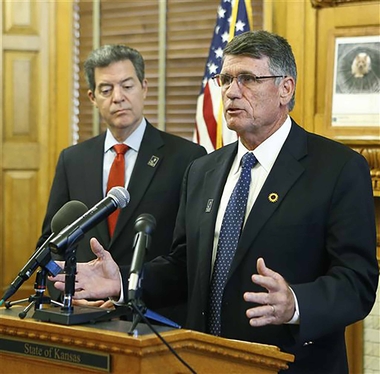Plan revives old tensions in Kansas school funding debate

Topeka, Kan. — A new funding plan from a group of Kansas school administrators is reviving longstanding regional tensions and spotlighting questions about whether the state spends enough on public education.
In part, it's a throwback, seeking to distribute the nearly $4.1 billion a year in state aid to its 286 local school districts per student through a complex formula. Legislators junked such a formula last year in favor of predictable "block grants" that allow the state to better control its spending.
But other provisions represent a radical departure from past policy: stripping local districts of their power to tax while using a statewide property tax increase as a way to prevent poorer schools from falling too far behind wealthier ones.
The key issues involving the new school funding plan are:
___
Driving the work
About 30 school superintendents, business officers and special education directors have been working on the plan for more than a year. Republicans who pushed the 2015 school funding changes through the Legislature always saw them as a two-year fix, and lawmakers expect to write a new formula next year.
The state has been in and out of school funding lawsuits for decades. The last one, filed by four districts in 2010, is before the Kansas Supreme Court.
The justices will hear arguments Sept. 21 on whether legislators are spending enough money on schools to fulfill a duty under the state constitution to provide a suitable education for every child.
"The time for much-needed school finance reform is now," GOP Gov. Sam Brownback said during a recent news conference in which he solicited opinions and ideas on education funding.
___
Break from the past
The most notable feature of the administrators' plan is how it would shift decisions about taxes from local school boards to state legislators.
Local control of schools remains a cherished idea, even as the state has asserted greater influence over funding to help poor districts.
State law allows districts to impose local property taxes to supplement their state aid. In the name of fairness, it caps the amount at an average of $2,340 per student and provides extra money to poor districts. Critics contend the system still favors wealthy districts that can raise local taxes far more easily than poor ones.
"That's an area that we want to get away from because there are questions about equity," said G.A. Buie, executive director of the United School Administrators of Kansas.
The administrators' plan would impose a single statewide property tax, which, along with state aid, would be meant to cover districts' full operating costs.
___
Major objections
Senate Minority Leader Anthony Hensley, a Topeka Democrat, called the administrators' plan a "good starting point" for a debate. But any proposal to reduce or eliminate local districts' power to tax would face strong opposition from Johnson County, home to affluent Kansas City suburbs and whose strong schools have attracted families for decades and fueled a post-World War II population boom that still continues, 70 years later.
Rep. Melissa Rooker, a Fairway Republican, said it's appropriate to cap local taxes in the name of fairness, yet eliminating them is an "absolute non-starter" because local voters should have the option of raising additional funds for extra programs.
Under the administrators' plan, local districts would have to rely solely on the Legislature to provide enough funds for schools.
"It is mind-boggling that this is coming from school officials," she said. "I was just flabbergasted."
___
Debate over spending
Many educators argue the state is shorting its public schools on their total aid. WhileBrownbackand some GOP legislators strongly dispute the idea, the Republican-controlled State Board of Education has proposed phasing in an $893 million increase in aid over two years.
The administrators who drafted the plan did not set a target for overall spending.
"That's a separate conversation," said Jim Freeman, the retired Wichita public schools chief financial officer, who presented the plan during a recent forum for educators.
John Hanna,
AP Political Writer
Copyright 2016 The Associated Press. All rights reserved. This material may not be published, broadcast, rewritten or redistributed.
Copyright 2016 The Gayly - 9/3/2016 @ 1:42 p.m. CDT.





